UK Drive: The Hyundai Kona is one of best small SUVs on the market
The Korean firm is making some of the best cars on the market, so how does the Kona stack up? Cameron Richards has driven it.

What is it?
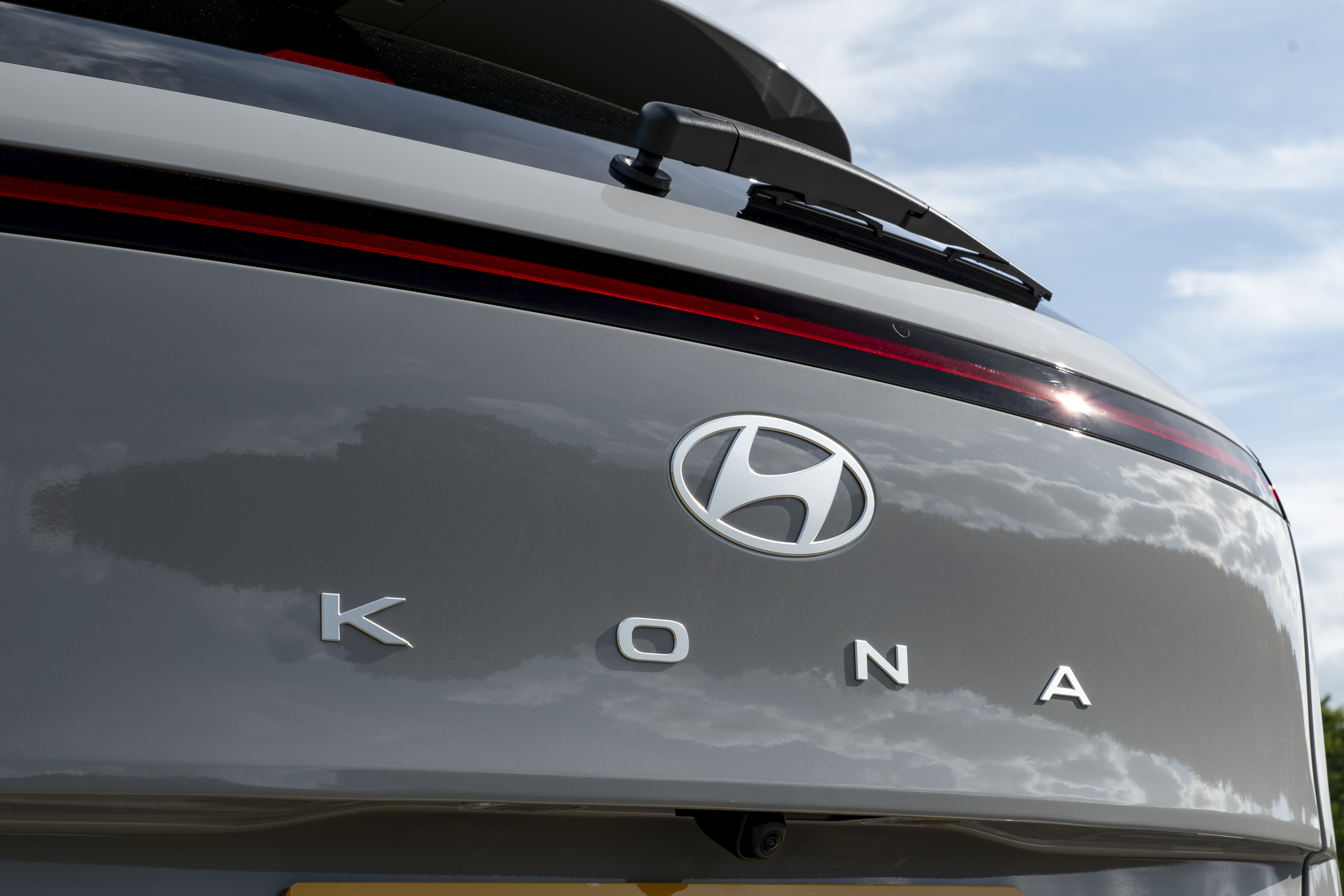
It competes in the fiercely competitive compact SUV market, taking on the likes of the Ford Puma and Skoda Kamiq. The previous generation model became a firm favourite with British drivers thanks to its excellent levels of standard equipment, good looks and multiple powertrain options.
So, to continue with the car’s success, the Korean firm has introduced a new second-generation car, but can this new car pick up where the old model left off?
What’s new?

It features the firm’s latest design language with a curved and angular body, and there is more space inside for occupants than before.
There are now sporty N-Line trim levels available as well as a boost in even more standard equipment.
But, where the car jumps ahead of the competition is that you can get it with a plethora of different engines, including petrol, hybrid and an electric variant.
What’s under the bonnet?
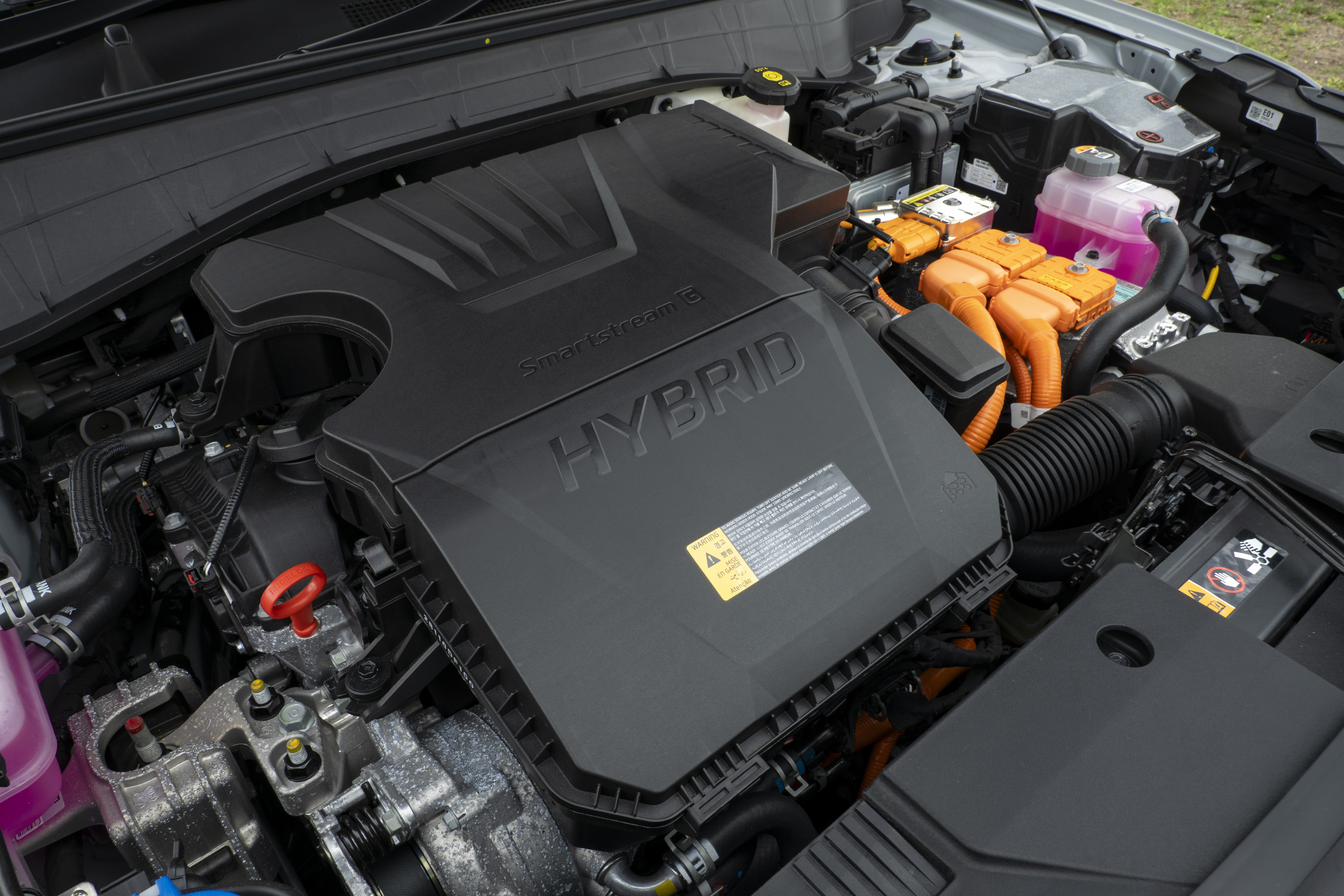
In terms of power, it produces 135bhp and 250Nm of torque, while 0-60mph is achieved in 10 seconds, and the car will continue all the way to 121mph. Hyundai claims that the car can achieve up to 52.3mpg on the combined cycle and that it pumps out 145g/km of CO2.
What’s more, our test car comes with a six-speed manual transmission, which seems rare nowadays in a world of automatic gearboxes.
What’s it like to drive?
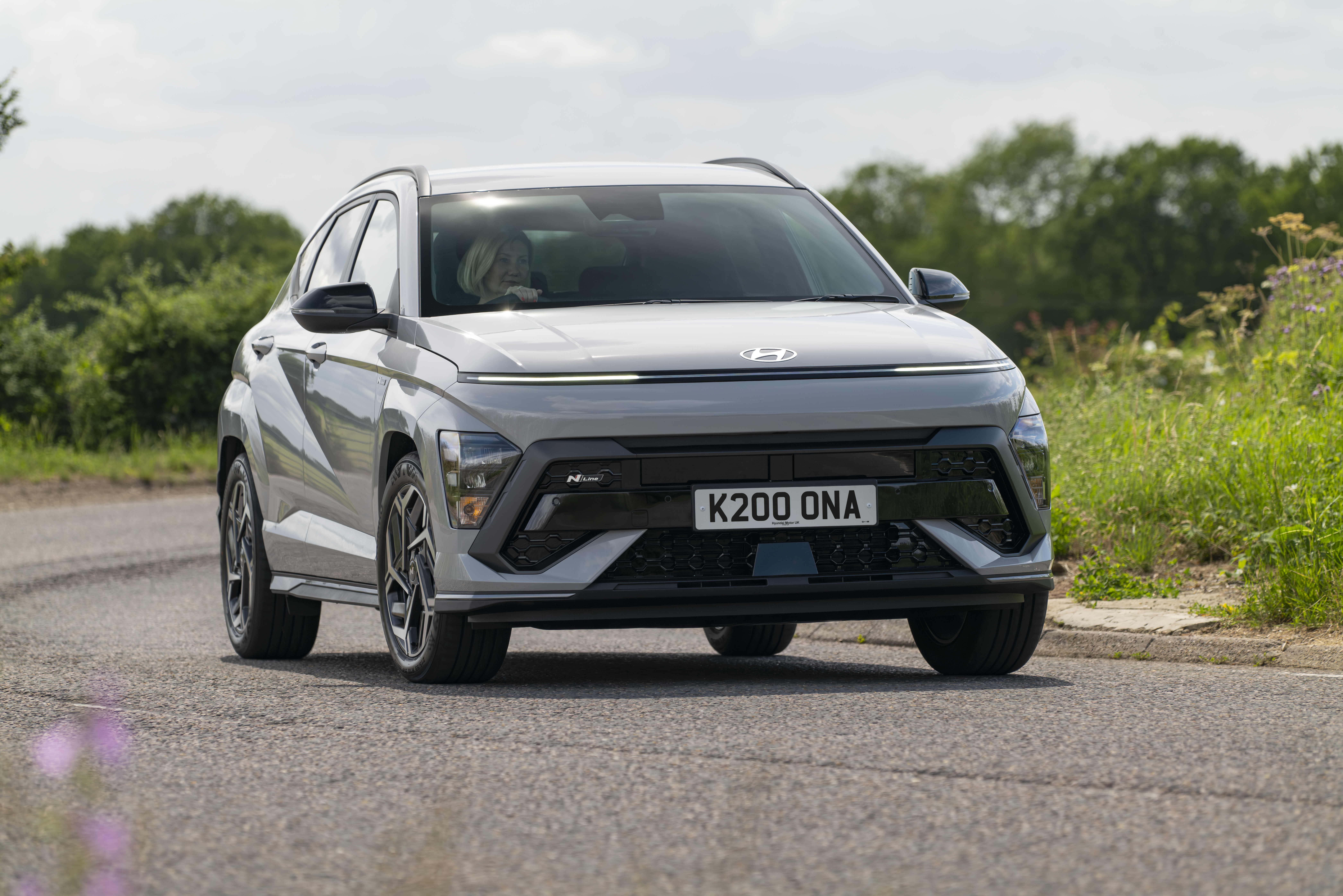
Our car’s six-speed manual gearbox is precise, slick and a joy to use. The clutch is nice and smooth and the ride is supple with the car doing an excellent job of absorbing rutted surfaces.
On the motorway, the cabin is well insulated from wind noise, although there is a fair bit of tyre roar.
In terms of handling, the Kona has a decent level of grip, and there is limited body roll around the twisty bits. However, the steering feels numb and is fairly slow on input, making it not as fun to drive as its bigger brother, the Tucson.
Also, the 1.6-litre turbocharged petrol engine doesn’t have a lot of torque, meaning you find yourself shifting through the gears a lot.
How does it look?
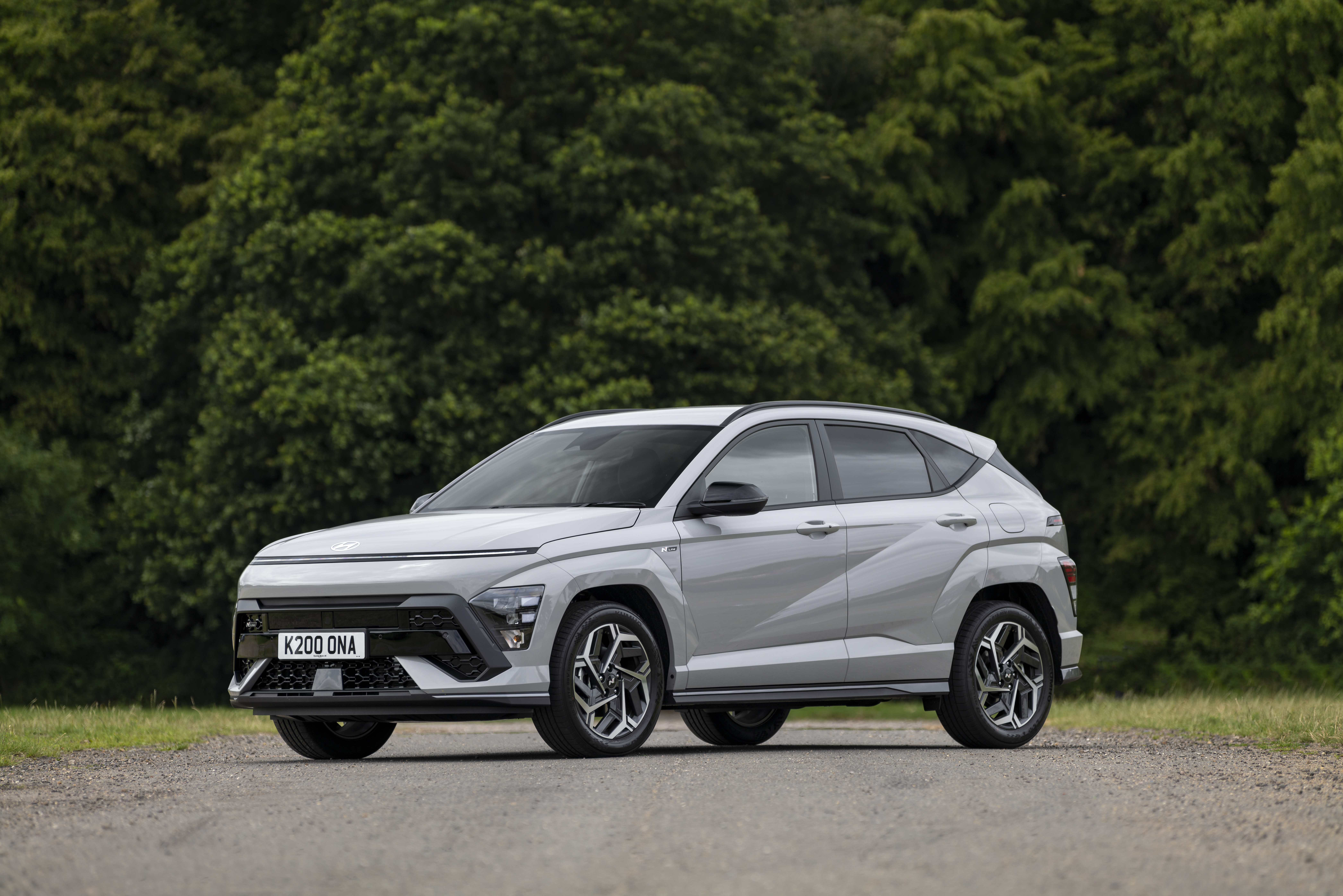
The body has a more curvaceous stance with its smooth wraparound front LED light bar at the front, squared-off wheel arch extensions and deep body lines that run down the side profile.
At the back, there is a curved full-width light bar and a satin silver rear lower bumper. Plus, the roof rails fitted to our test car give it that SUV look.
What’s it like inside?
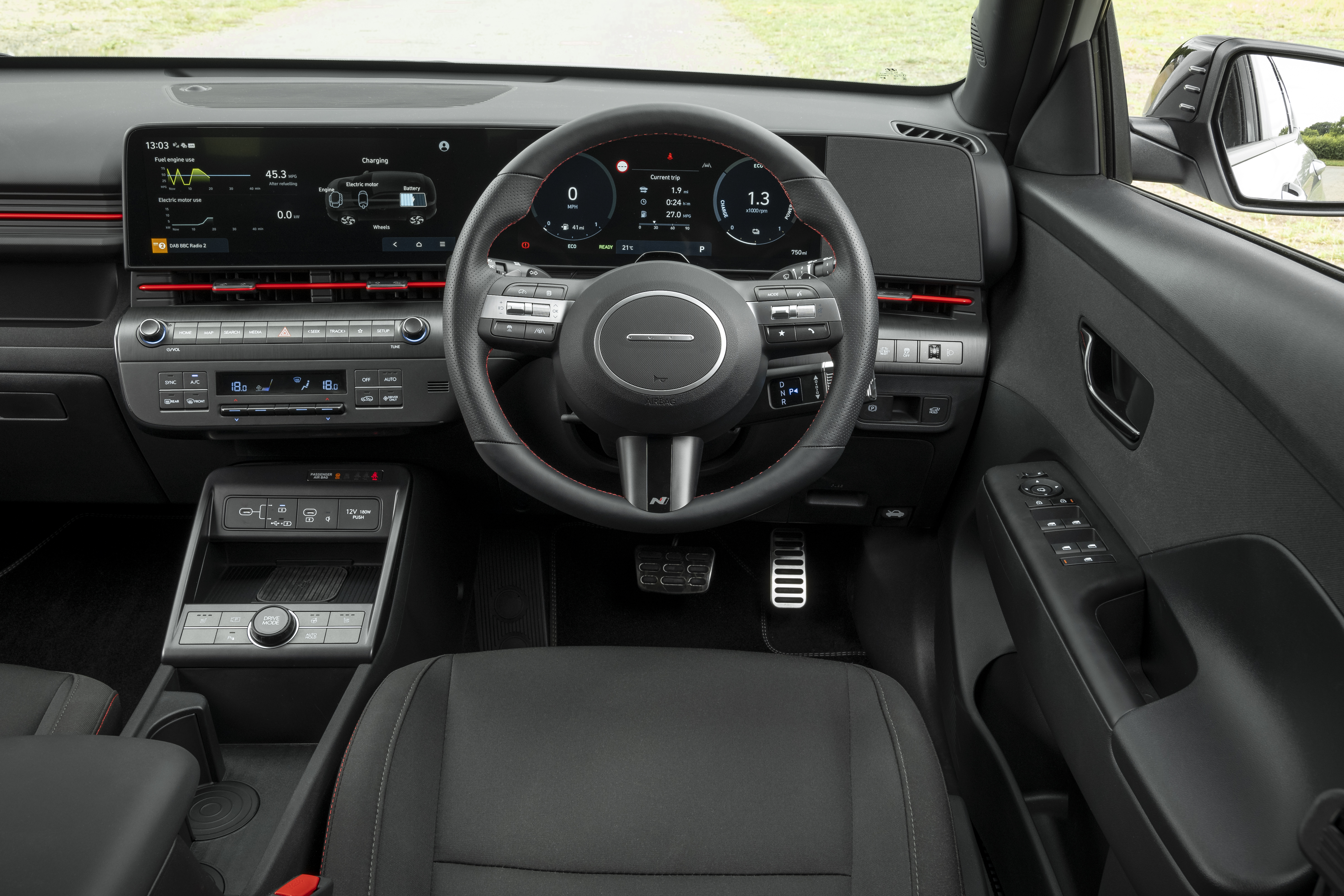
The dashboard includes two 12.3-inch screens, which bring a digital driver’s display and infotainment system that are slick and easy to use. Also, there are physical buttons for almost everything, making navigating around the cabin a lot more intuitive.
Up front, there is plenty of storage including two cup holders, a centre armrest with additional storage, a shelf on the dashboard and deep door bins.
Our test car comes fitted with a glass sunroof and pale leather interior, which floods the cabin with light, while also giving the interior a more premium feel.
Space in the back is impressive with loads of head and legroom for occupants and there is handy netting on the back of the front seats, increasing practicality even further.
Boot space is good too, with the Kona offering a total of 466 litres or 1,300 litres with the rear seats folded down. Plus, the overall shape is very usable due to its large opening and fairly low load lip.
What’s the spec like?
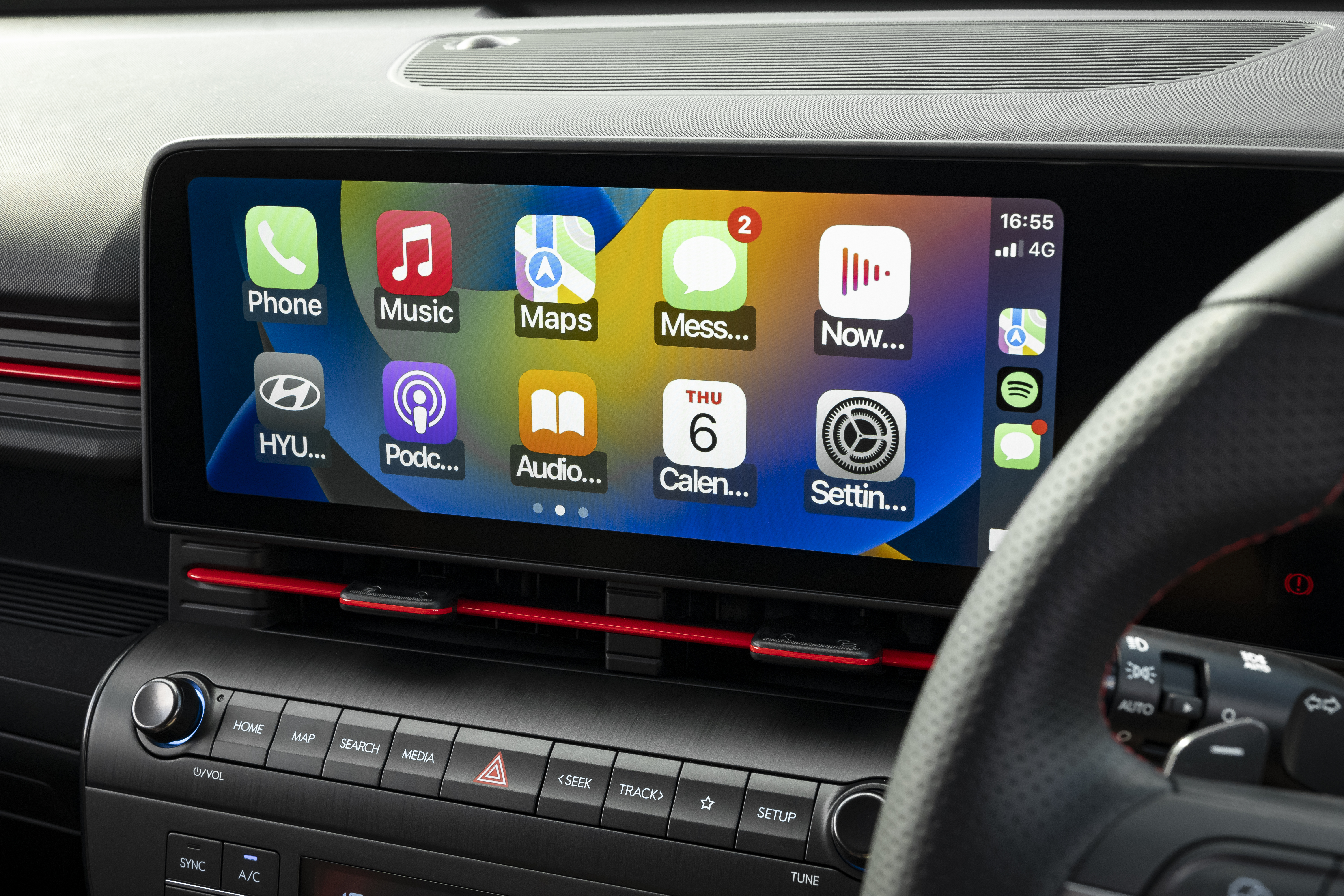
The range kicks off at £26,735 for the Advance model and features dual-zone climate control, 17-inch alloy wheels and LED headlights. The N-Line adds a few sporty exterior enhancements such as a bodykit, 18-inch alloy wheels and privacy glass.
We’re driving the flagship Ultimate trim level, which starts at £30,935 and boasts a premium Bose seven-speaker audio system, a glass sunroof, front, rear and side parking sensors and ventilated front seats.
If you want to go for the electric variant, the Kona’s price tag jumps up to £32,400, but you still get an excellent level of standard equipment such as keyless entry, LED headlights and the all-important energy-efficient heat pump.
Verdict
The small SUV segment is one of the most competitive on the market, but Hyundai has done an excellent job with the second-generation Kona.
It looks good, comes with a premium and user-friendly interior, has lots of space, and with a choice of petrol, hybrid and electric variants, there is a version to suit everyone.
If you’re looking for a compact SUV that will be easy to live with and shouldn’t be expensive to run, the Kona should definitely be on your shortlist.





